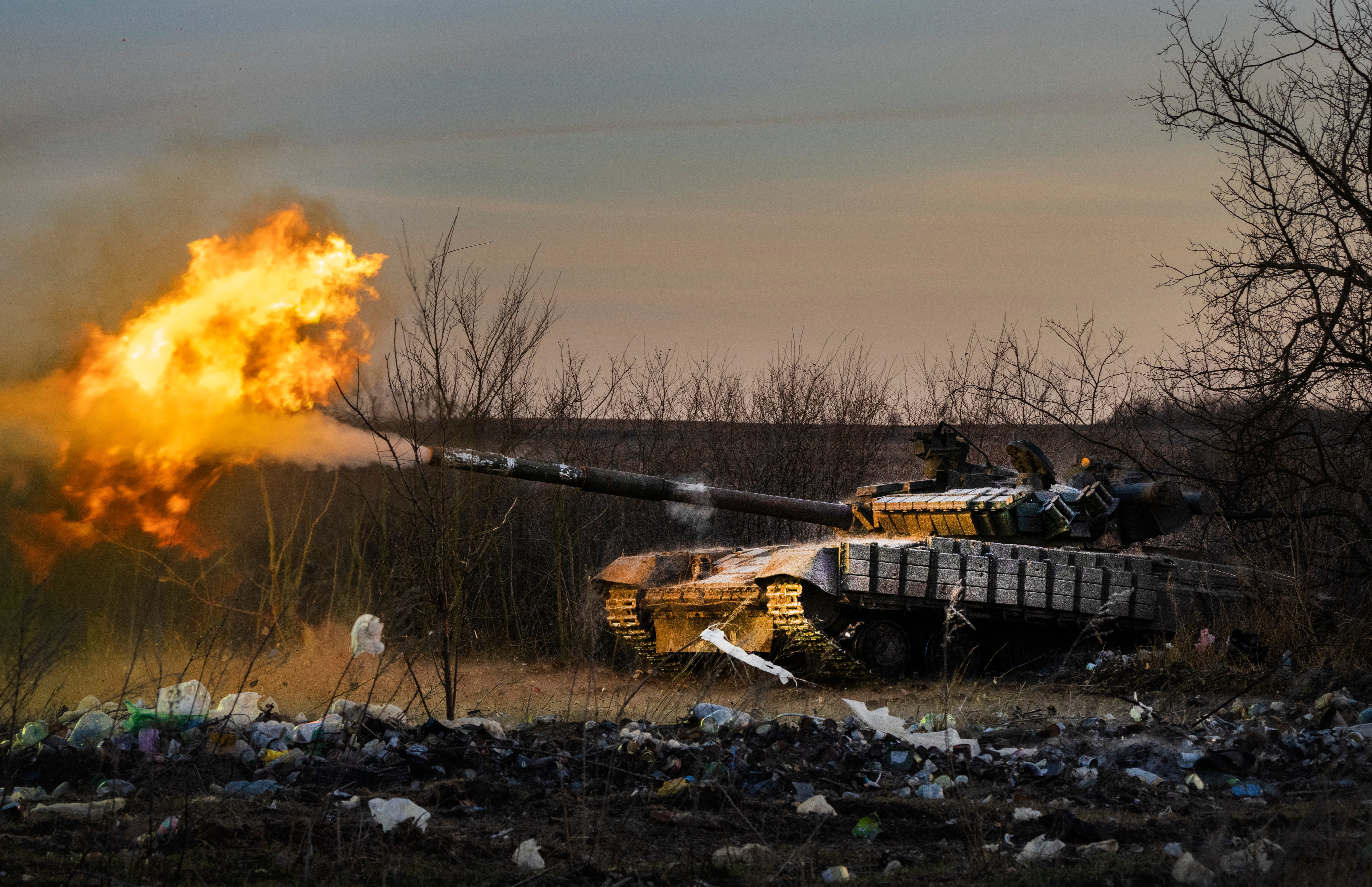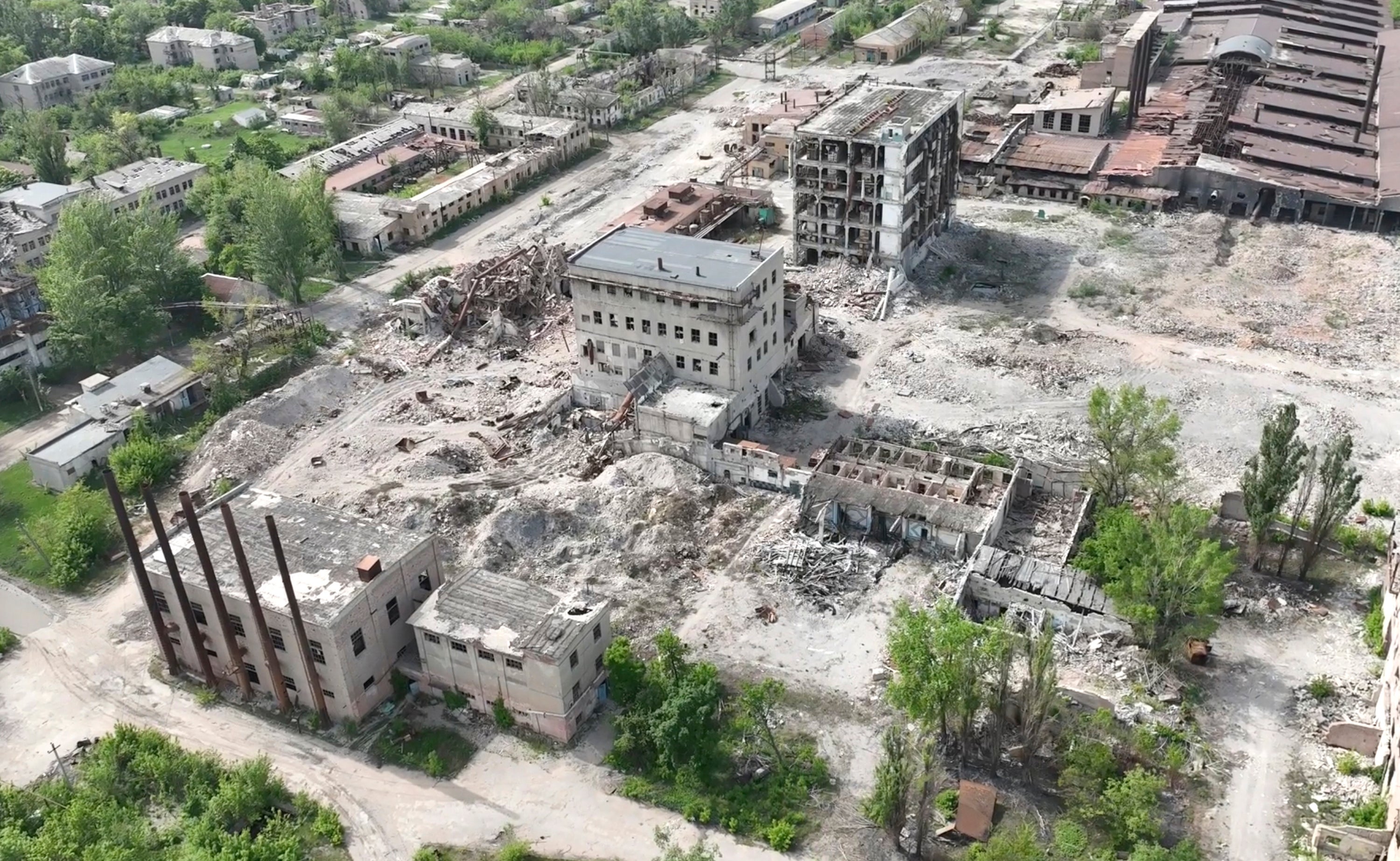Kyiv’s forces facing big Russian push on eastern frontline, military says
Russia has amassed tens of thousands of soldiers along sectors of the eastern frontline in Ukraine, according to seniro Ukrainian military officials

Your support helps us to tell the story
From reproductive rights to climate change to Big Tech, The Independent is on the ground when the story is developing. Whether it's investigating the financials of Elon Musk's pro-Trump PAC or producing our latest documentary, 'The A Word', which shines a light on the American women fighting for reproductive rights, we know how important it is to parse out the facts from the messaging.
At such a critical moment in US history, we need reporters on the ground. Your donation allows us to keep sending journalists to speak to both sides of the story.
The Independent is trusted by Americans across the entire political spectrum. And unlike many other quality news outlets, we choose not to lock Americans out of our reporting and analysis with paywalls. We believe quality journalism should be available to everyone, paid for by those who can afford it.
Your support makes all the difference.Russia is advancing along multiple parts of the eastern frontline in Ukraine but local defenders are so far holding against the Kremlin’s bigger and better-equipped forces, Ukrainian military officials say.
As a recently-passed $61 billion (£49bn) US weapons package arrives in stages in Ukraine following six months of delay, Russian forces are looking to capitalise on a current manpower and artillery advantage to take further territory before the foreign aid diminishes their edge. It comes after Ukrainian military chief Oleksandr Srysky admitted over the weekend that “the situation on the frontline has worsened”.
Nazar Voloshyn, a spokesperson for Ukrainian strategic command in the east of the country, said on Thursday that Russian forces have amassed tens of thousands of troops in recent weeks in the eastern region of Donetsk, as part of a bid to push in twp areas, including the city of Chasiv Yar and the town of Ocheretyne.
Mr Voloshyn said on national television: "The enemy is trying to seize the strategic initiative and breach our defence.
"The enemy is actively attacking along the entire front line, and in several directions they have achieved certain tactical advances. The situation is changing dynamically."


Ukraine’s difficulties have been deepening for months as the military waited for vital new military aid from the US.
Russian forces took the city of Avdiivka in Donetsk in mid-February after a decade of fighting in that area. Since then, they have taken 11 towns to the north and northwest of the city, according to Ukrainian war tracker DeepState.
Ukrainian soldiers and analysts warned then that the advances were probable given poor primary defensive fortifications; they warn now that similar issues could lead to further Russian gains nearby, though they say more is being done to remedy the problem.
In Chasiv Yar, a small city with a prewar population of 12,000, roughly 50 miles north of Avdiivka, Russian forces are dropping more than 30 powerful glide bombs a day, according to a spokesperson for the 26th Artillery Brigade deployed in the city. They have also amassed more than 25,000 soldiers for an attack on the city, which sits on high ground and is a natural launching point for further attacks in Donetsk.
Both sides are currently battling for control over two villages downhill of the city’s flanks, with Russian troops so far unable to enter Chasiv Yar.
But while they took nearly a year to advance less than four miles from nearby Bakhmut to the edge of Chasiv Yar, they pushed nearly five miles in the last fortnight to capture the village of Ocheretyne nearby.
Tatarigami, a Ukrainian war tracker with close ties to the military, warns that Russian forces may now look to launch a “multi-echelon double-pincer move” from Chasiv Yar in the north of Donetsk and Ocheretyne further south to encircle the Ukrainian troops fighting in that bulge in the frontline.
The Donetsk and nearby Luhansk provinces together make up the Donbas, an expansive industrial region bordering Russia that President Vladimir Putin identified as a focus from the war’s outset and where Moscow-backed separatists have fought since 2014.
Ukrainian forces are now racing to build more defensive fortifications along the around 600-mile front line.
“Overall, thanks to ground-level efforts driven by the personal initiative of brigade officers, soldiers, and sergeants, along with the arrival of Western aid and stabilisation measures that we can’t disclose, the situation may improve,” wrote Tatarigami.
But, they added: “Ukraine can slow down and even stop the Russian advance, but not without losing several settlements.”
In Ukrainian-held city of Odesa away from the frontline, meanwhile, Russia launched its third attack in a week, firing ballistic missiles at the southern Ukrainian port city and injuring 14 people, local officials and emergency services said.
Long-range strikes have been a feature of Europe’s biggest conflict since World War II, which mostly has focused on attrition. Kyiv officials have pleaded for more air defence systems from Ukraine’s Western partners, but they have been slow in coming.
Ukrainian President Volodymyr Zelensky said on Thursday that Russia had launched more than 300 missiles of various types, almost 300 Shahed-drones, and more than 3,200 guided aerial bombs at Ukraine in April alone.
Odesa, a key export hub for millions of tons of Ukrainian grain exports through the Black Sea, has been repeatedly targeted by Russia. Thursday is the 10th anniversary of clashes in the city between pro- and anti-Russia demonstrators that left 48 people dead.
Join our commenting forum
Join thought-provoking conversations, follow other Independent readers and see their replies
Comments